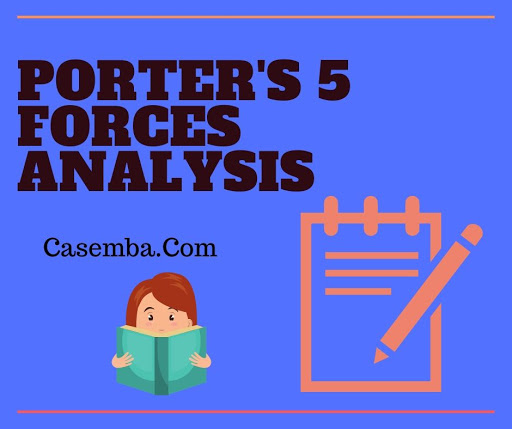Porter's 5 Forces of Private-Sector Organizations Case Study Analysis
This is not the actual case solution. To get the case solution place your order on the site and contact website support.
Home >> Robert S Kaplan >> Private-Sector Organizations >> Porters Analysis
Porter's 5 Forces of Private-Sector Organizations Case Analysis
The porter five forces design would assist in gaining insights into the Porter's 5 Forces of Private-Sector Organizations Case Analysis industry and determine the possibility of the success of the alternatives, which has been thought about by the management of the company for the purpose of dealing with the emerging problems associated with the decreasing subscription rate of consumers.
1. Intensity of rivalry
 It is to notify that the Porter's 5 Forces of Private-Sector Organizations Case Analysis is a part of the multinational show business in the United States. The business has actually been taken part in offering the services in more than ninety nations with the video as needed, items of streaming media and media company.
It is to notify that the Porter's 5 Forces of Private-Sector Organizations Case Analysis is a part of the multinational show business in the United States. The business has actually been taken part in offering the services in more than ninety nations with the video as needed, items of streaming media and media company.
The market where the Porter's 5 Forces of Private-Sector Organizations Case Analysis has actually been running given that its beginning has many market gamers with the significant market share and increased incomes. There is an intense level of competitors or rivalry in the media and entertainment market, engaging companies to strive in order to retain the current consumers through providing services at economical or reasonable rates.
Shortly, the strength of rivalry is strong in the market and it is important for the company to come up with distinct and ingenious offerings as the audience or clients are more advanced in such contemporary innovation period.
2. Threats of new entrants
There is a high cost of entrance in the media and entrainment industry. The show business requires a big capital quantity as the companies which are taken part in supplying home entertainment service have larger start-up cost, that includes:
Legal cost.
Marketing expense.
Distribution cost.
Licensing cost.
In contrast, the existing entertainment company has actually been thoroughly dealing with their targeted sections with the particular expertise, which is why the danger of new entrants is low.
Another essential element is the intensity of competitors within the key market players in the market, due to which the brand-new entrant be reluctant while getting in into the market. The innovation and trends in the media industry are evolving on consistent basis, which is adapted by market competitors and Porter's Five Forces of Private-Sector Organizations Case Solution.
3. Threat of substitutes
The hazard of substitutes in the market present moderate risk level in media and the show business. The business is facinga strong competition from the competitors offering comparable services through online streaming and rental DVDs. Likewise, the traditional media content service provider is among the example of the substitute items. The consumer might also participate in other pastime and source of information as compared to seeing media material and online streaming.
4. Bargaining power of buyer
The dynamics of media and home entertainment industry allows the customers to have high bargaining power. The low expense of switching enables the clients to look for other media service companies and cancel their Porter's Five Forces of Private-Sector Organizations Case Solution membership, thus increasing the company hazard.
5. Bargaining power of suppliers
The bargaining power of supplier is high force in the marketplace. This is since there are few number of providers who produce entertainment and media based material. Because Porter's 5 Forces of Private-Sector Organizations Case Help has actually been competing against the traditional supplier of entertainment and media, it requires to show greater versatility in contract as compared to the conventional services. Also, the products is innovation based, the dependency of the companies are increasing on constant basis.
Objectives and Goals of the Business:
In Illinois, United States of America, one of the best manufacturer of sensing unit and competitive organization is Case Service. The company is associated with manufacturing of broad item range and advancement of activities, networks and procedures for being successful amongst the competitive environment of market giving it a substantial advantage over competitiveness. The company's objectives is mainly to be the manufacturer of sensing unit with high quality and highly customized organization surrounded by the premium market of sensing unit production in the United States of America.
The goal of the organization is to bring decrease in the item prices by increasing the sales system for every item. The organizational management is included in determination of potential products to use their customer in both long term and brief term implies. The organizational strength includes the facility of competitive position within the manufacturing market of sensing unit in the United States of America on the basis of 5 pillars which includes client care, performance in operation management, recognition of brand name, customizable capabilities and technical development.
The organization is a leading one and performing as a leader in the sensor market of the United States for their customizable services and systems of sensor. Innovation in ideas and item developing and arrangement of services to their consumers are among the competitive strengths of the company. The company has utilized cross-functional managers who are responsible for adjustment and understanding of the company's technique for competitiveness whereas, the company's weak point includes the decision making in regard to the products' removal or retention only on the basis of monetary elements. Therefore, the measurement of ROIC is not connected with the trade incorporation and concerns of customers.
